The Pantheon of Derivatives – Part III
Click for complete series
Table of Contents
Some Topology
Whereas the terminology of vector fields, trajectories, and flows almost by itself suggests its origins and physical relevance, the general treatment of vector fields, however, requires some abstractions. The following might appear to be purely mathematical constructions, and I will restrict myself to a minimum, but they actually occur in modern physics: from the daily need to solve differential equations on various (non-Euclidean) geometric objects like in general relativity or quantum field theory, to the front end research in cosmology.
Vector Bundles
The tangents on a manifold ##M## define a vector field in a natural way. That is, at each point ##x \in M## there are the tangents to all possible curves through ##x## and they span the tangent (vector) space ##TM|_x## at this point. If ##M## is an m-dimensional manifold, then ##\left. TM\right|_x## is an m-dimensional vector space with the local coordinates ##\frac{\partial}{\partial x^1},\ldots , \frac{\partial}{\partial x^m} ##. Now we consider the collection of all these tangent spaces, i.e. for all points of ##M##. This gives us a collection
\begin{equation}\label{TM}
TM= \bigcup_{x \in M}\left. TM\right|_x
\end{equation}
which we call tangent bundle of ##M##. This can be generalized to an arbitrary vector field, in which case it is called a vector bundle. Note that these objects are actually tangent space bundles, resp. vector space bundles.
Definition: A real (complex) vector bundle, ##\mathbb{K}\in \{\mathbb{R},\mathbb{C}\}##, is a triple ##(E,X,\pi)## which consists of
- two topological spaces ##E##, the total space, and ##X##, the base space,
- a continuous projection ##\pi : E \rightarrow X##, the bundle projection,
- and ##E_x = \pi^{-1}(x)## is endowed with the structure of a finite-dimensional real (complex) vector space for every ##x \in X##, the fiber of ##x##,
together with the following local compatibility conditions:
For every point in ##x\in X##, there is an open neighborhood ##U## of ##x##, a natural number ##n##, and a homeomorphism
\begin{equation}\label{Vector-Bundle-I}
\eta : U \times \mathbb{K}^n \rightarrow \left. E\right|_U = \pi^{-1}(U) \subseteq E
\end{equation}
such that for all ##x \in U##,
\begin{equation}\label{Vector-Bundle-II}
(\pi \circ \eta )(x,v)=x
\end{equation}
for all ##v\in \mathbb{K}^n## and the map
\begin{equation}\label{Vector-Bundle-III}
v \mapsto \eta(y,v)
\end{equation}
establishes a linear isomorphism between the vector spaces ##\mathbb{K}^n## and ##E_y = \pi^{-1}(y)## for each ##y\in U##.
The open neighborhood ##U## together with the homeomorphism ##\eta## is called a local trivialization ##(U,\eta)## of the vector bundle. It means, that the bundle projection ##\pi## behaves locally like the projection of ##U \times \mathbb{K}^n## onto ##U##. This guarantees, that the dimension of all fibers of a connection component of a point ##x\in X## is the same. If it is the same number ##n## for the entire topological space ##X##, then the vector bundle ##E = (E,X, \pi)## is of rank n.
Note that the notation in (\ref{TM}) is also the notation of the tangent bundle of a manifold ##M## by its total space ##TM##, whereas ##T_xM## denotes a single fiber at ##x \in M##. The total space is not denoted as a pair ##(M,T_{(.)}M)## to avoid the false expression of a Cartesian product. The tangent bundle (field) on a manifold is often simply referred to as vector bundle (field) on ##M##.
Vector bundles of rank ##1## are called line bundles. A vector bundle of the form ##(X\times \mathbb{K}^n,X,proj_1)## is called a trivial vector bundle. I think the easiest nontrivial vector bundle is the line bundle of a Möbius strip, which is locally homeomorph to ##U \times \mathbb{R}## with an open set ##U \subseteq S^1## of a circle. The twist guarantees, that it is nontrivial because a global structure ##(S^1 \times \mathbb{R},S^1,proj_1)## would define a cylinder.
The most important vector bundles when dealing with derivatives are tangent bundles ##TM=(TM,M,\pi)## of (smooth) manifolds ##M##. As their fibers are the tangent spaces at points ##x \in M## they are vector spaces ##V=T_xM##, which have dual spaces ##V^*=\operatorname{Hom}_\mathbb{K}(V,\mathbb{K})\; , \; \mathbb{K}\in \{\mathbb{R},\mathbb{C}\}##, of all linear functions to their underlying scalar field.
If we assign each point ##x## its dual tangent space, the cotangent space ##T_x^*M## we will get the dual vector bundle, here the cotangent bundle
\begin{equation}\label{Dual-Bundle}
T^*M = (T^*M,M,\pi)= \bigcup_{x \in M} T^*_xM= \bigcup_{x \in M} \operatorname{Hom}_\mathbb{K}(T_xM,\mathbb{K})
\end{equation}
If we drop the requirement on the fibers ##E_x=\pi^{-1}(x)## to be a vector space, which was motivated by tangent spaces and substitute it by the requirement, that the fibers are all homeomorphic to another topological space ##F##, then ##(E,X,\pi,F)## is called a fiber bundle. Vector bundles are a special case of fiber bundles. One can express fiber bundles by the short exact sequence
\begin{equation}\label{FiberBundle}
F \overset{\iota}{\rightarrowtail} E \overset{\pi}{\twoheadrightarrow} X
\end{equation}
If we have in addition a continuous operation ##(E , G) rightarrow E## of a topological group, e.g. a Lie group, on the total space ##E## of a fibre bundle, then ##(E,X,pi,F,G)## is called a principal bundle, if the group operation maps each fiber ##E_x## on itself, i.e. ##pi (xg)=pi(x)## for all ##x in E, , ,gin G##, the group operates freely (only ##g=1 in G## leaves points in a fiber invariant) and transitive (all points ##y in E_x## in a fiber can be reached by some ##gin G##). ##G## is called structure group of the principal bundle.
Sections
One can think of a fiber bundle ##E=(E,X,\pi,F)## as a topological base space ##X## to which at each of its points ##x## a fiber ##E_x## is attached and the bundle projection ##\pi## maps each fiber to its base point. Now we consider the opposite direction: a pairing of a base point with some point of its fiber. This generalizes somehow the concept of the graphs of functions ##f## we draw, which are also a pairing ##(x,f(x))## of base points and certain points in another dimension. In the case of functions, the graphs are part of a Cartesian product, which we don’t have here, except for trivial bundles. If we think of a fiber bundle of something similar to the spines of a hedgehog (line bundle), and the bundle projection along the spines to the point where they grow out of the hedgehog, then we are now interested in a cut through all spines.
Definition: Let ##E=(E,X,\pi,F)## be a fiber bundle. A global section in ##E## is a continuous function ##\sigma : X \rightarrow E## such that for all ##x \in X##
\begin{equation}\label{G-Section}
(\pi \circ \sigma)(x) = \pi (\sigma(x)) = x
\end{equation}
Thus ##\sigma## is a right inverse to the bundle projection ##\pi##. We denote the set of all global sections of ##E## by \begin{equation}\label{Gamma}
\Gamma(X,E)=\Gamma(E)
\end{equation}
If ##U \subseteq X## is an open set, then a continuous function ##\sigma : U \rightarrow E## is called a local section of ##E##, if it satisfies equation (\ref{G-Section}) on ##U##, i.e. is a global section on ##(E,U,\pi,F)##.
In case ##E## is a smooth fiber bundle on a smooth manifold ##X## and ##\sigma : X \rightarrow E## a smooth function, then it is called a smooth section and the set of all smooth sections of ##E## is sometimes denoted by ##\Gamma^ \infty(E)##.
If ##C \subseteq X## is a compact set, and ##\sigma \in \Gamma(X,E)## a section of a vector bundle ##E## such that ##\sigma(x) = (x,0)## whenever ##x \notin C##, then ##\sigma## is called a section with compact support and we denote the set of all sections with a compact support by ##\Gamma_C(X,E)=\Gamma_C(E)## or ##\Gamma_0(X,E)=\Gamma_0(E)##.
Pullbacks
Assume we have some kind of mapping ##m : X \rightarrow Y##. This could be literally everything: an operator, a morphism in any category, tensor fields, connections, Lie derivatives on fiber bundles, etc. Now if there is an object somehow related to ##Y##, it is natural to ask, whether there is something similar related to ##X## which respects the ways along with ##m## and back. It is easy if ##m## is a bijective morphism, but what can be said in general? This leads us to the concepts of pullbacks.
Definition: Let ##X## and ##Y## be topological spaces, ##\varphi : X \rightarrow Y## a continuous function and ##E=(E,Y,\pi)## a fiber bundle over ##Y##. Then the fiber bundle defined by
\begin{equation}\label{PB-I}
\varphi^*E=\{(x,e)\in X\times E \,\vert \, \varphi(x)=\pi(e)\}\subseteq X \times E
\end{equation}
equipped with the subspace topology and the projection map
\begin{equation}\label{PB-II}
\pi^* : \varphi^*E \rightarrow X \, , \, \pi^*(x,e)=x
\end{equation}
is called the pullback bundle ##(\varphi^*E,X,\pi^*)##. Let ##\psi: \varphi^*E \rightarrow E## be the projection onto the second factor, then the following diagram commutes:
\begin{equation}\label{PB-III}
\begin{matrix}
\varphi^*E & \overset{\psi}{\longrightarrow} &E\\
\pi^* \downarrow & & \;\; \downarrow \pi\\
X & \overset{\varphi}{\longrightarrow} &Y
\end{matrix}
\end{equation}
##\varphi^*E## is now a fiber bundle over ##X##. The bundle ##\varphi^*E## is called the pullback of ##E## by ##\varphi## or the bundle induced by ##\varphi##. The pair ##(\psi,\varphi)## is a (case of a) fiber bundle morphism – ##\psi## is called a cover of ##\varphi## – which are generally defined by the equation (commutative diagramm) (\ref{PB-III})
\begin{equation}\label{Fiber-Bundle-Morphism}
\pi \circ \psi = \varphi \circ \pi^*
\end{equation}
If ##(U, \eta)## is a local trivialization of ##E## then ##(\varphi^{-1}(U), \eta^*)## is a local trivialization of ##\varphi^*E## where ##\eta^*(x,e)=(x,proj_2(\eta(e)))##.
Given a section ##\sigma \in \Gamma(Y,E)## then
\begin{equation}\label{PB-Section}
\varphi^*\sigma := \sigma \circ \varphi \in \Gamma(X,\varphi^*E)
\end{equation}
is called pullback section of ##\sigma## by ##\varphi##.
Topological spaces in differential geometry are usually smooth manifolds. In this case one requires ##\varphi## and the vector bundles also to be smooth.
Smooth Manifolds and Scalar Functions
Let ##\varphi: M \rightarrow N ## be a smooth function between smooth manifolds and ## \nu : N \rightarrow \mathbb{R} ## a smooth function on ##N##. Then the pullback ## \varphi^* \nu ## of ##\nu ## by ##\varphi## is defined by
\begin{equation}\label{PB-SF}
(\varphi^*\nu)(x) = \nu(\varphi(x))
\end{equation}
The set ##C^\infty(M)## of smooth scalar functions ##\psi : M \rightarrow \mathbb{R}## can be naturally identified with the vector space of smooth sections ##\Gamma^\infty(M,M\times \mathbb{R})## on the vector bundle ##\coprod_{x \in M}\mathbb{R} \cong M \times \mathbb{R}##. Thus the pullback of the smooth scalar function ##\psi##
\begin{equation}\label{PB-SSF}
(\varphi^*\psi)(x) = \psi(\varphi(x))
\end{equation}
is the pullback of a smooth section on the smooth vector bundle ##M\times \mathbb{R}##.
Multilinear forms
Let ##\varphi : V \rightarrow W## be a linear map and ##F## a multilinear form ##F: W \times \ldots \times W \rightarrow \mathbb{R}##. Then the pullback ##\varphi^*F## of ##F## by ##\varphi## is defined by
\begin{equation}\label{PB-MF}
(\varphi^{*}F)(v_{1},\ldots ,v_{n})=F(\varphi (v_{1}),\ldots ,\varphi (v_{n}))
\end{equation}
Cotangents and 1-Forms
To imagine the following example, it is helpful to think of ##M=\mathbb{R}^m\, , \,N=\mathbb{R}^n## and ##J_x(f)## as the Jacobi-matrix of ##f## at a point ##x \in M##.
Let Let ##f: M \rightarrow N## be a smooth function between smooth manifolds. Then the differential ##J_x(f) = f_*=df=Df## of ##f## is a function that transforms tangent vectors of ##M## to the tangent vectors of ##N##. It can be viewed as a bundle morphism over ##M## of the tangent bundle ##TM## of ##M## to the pullback bundle ##f^*TN##: for a tangent vector ##v_x## of ##M## it is ##J_x(f)(v_x)=w_{f(x)}## a tangent vector of ##N##, that still remembers ##x##.
\begin{equation}\label{Cotangent-Bundle-I}
\begin{matrix}
TM & \overset{J_x(f)= f_*}{\longrightarrow} & f^*TN\\
\pi_M \downarrow & & \;\; \downarrow \pi’\\
M & \overset{=}{\longrightarrow} &M
\end{matrix}
\end{equation}
Now the transpose of ##f_*=J_x(f)=Df## maps the corresponding dual spaces, which are the cotangent bundles in the opposite direction:
\begin{equation}\label{Cotangent-Bundle-II}
J_x(f)^\tau = f_*^\tau \, : \,f^*T^*N \longrightarrow T^*M
\end{equation}
The sections ##\sigma \in \Gamma(N,T^*N)## are the ##1-##forms or Pfaffian forms on ##N##. Then ##(f^* \sigma) = \sigma \circ f \in \Gamma(M,f^*T^*N)## is the pullback section by ##f## (cp. (\ref{PB-Section})). A ##1-##form on ##M## is then achieved with the help of the above bundle morphism (\ref{Cotangent-Bundle-II}) at each point ##x \in M## defined by
\begin{equation} \label{PB-Cotangents} \begin{aligned}
(f^* \sigma)_x (v_x) &:=\sigma_{f(x)}(J_x(f)(v_x)) \\ &=\sigma_{f(x)}(f_*(v_x)) \\ &= \sigma_{f(x)}(D_xf(v_x))
\end{aligned} \end{equation}
for ##v_x \in T_xM##. Tangent vectors as part of a vector field are usually written ##X## instead of ##v_x##. However, one has to be careful not to confuse single tangent vectors with the entire vector field, which often is also written as ##X##. In the latter case, one denotes the points by ##p \in M## instead of ##x \in M## and the tangent vectors as ##X_p##.
Differential forms
Let ##f: M \rightarrow N ## be a smooth function between smooth manifolds and ##\sigma \in \Gamma(N,\wedge^k(T^*N))## a ##k-##form on ##N##, i.e. a section of ##N## to the ##k-##fold outer bundle of its cotangent bundle. As in the case of ##1-##forms, we define for tangent vectors ##X_1,\ldots,X_k \in T_pM## at a point ##p\in M## a ##k-##fold pullback differential form on ##M## by
\begin{equation}\label{PB-DF}
(f^* \sigma)_{p}(X_1,\ldots,X_k)=\sigma_{f(p)}(f_{*}(X_1 \wedge \ldots \wedge X_k)=\sigma_{f(p)}(d_pf(X_1),\ldots ,d_pf(X_k))
\end{equation}
The pullback ##f^*## of a differential form has two important compatibility properties
\begin{equation}\label{PB-DF-WP}
f^*(\omega_1 \wedge \omega_2)=f^*(\omega_1) \wedge f^*(\omega_2)
\end{equation}
\begin{equation}\label{PB-DF-ED}
f^*(d \omega) = df^*(\omega)
\end{equation}
which makes them an important tool in differential geometry.
Covariant Tensor Fields
Let ##f: M \rightarrow N ## be a smooth function between smooth manifolds and ##\mathcal{F}## a covariant tensor field of rank ##(0,k)## on ##N##, which is a section of the tensor bundle on ##N## whose fiber at ##y \in N## is the vector space of multinlinear ##k-##forms
\begin{equation}\label{PB-TF-I}
F\, : \,T_y(N) \times \ldots \times T_yN \longrightarrow \mathbb{K}
\end{equation}
Now the pullback of ##\mathcal{F}## by ##f## is the ##(0,k)-##tensor field ##f^*\mathcal{F}## on ##M## defined by ##(p \in M\, , \,X_i \in T_pM)##
\begin{equation}\label{PB-TF-II}
(f^* \mathcal{F})_{p}(X_1,\ldots,X_k)=\mathcal{F}_{f(p)}(f_{*}(X_1 \otimes \ldots \otimes X_k)=\mathcal{F}_{f(p)}(d_pf(X_1),\ldots ,d_pf(X_k))
\end{equation}
Diffeomorphisms
Let ##f: M \rightarrow N ## be a diffeomorphism between smooth manifolds, i.e. ##f## has an inverse function ##f^{-1}##. Then the linear map
\begin{equation}\label{PB-DM-I}
J_p(f)=f_*=d_pf \in GL(T_pM,T_{f(p)}N)
\end{equation}
can be inverted by
\begin{equation}\label{PB-DM-II}
J^{-1}_p(f)=f_*^{-1}=(d_pf)^{-1} \in GL(T_{f(p)}N,T_pM))
\end{equation}
Connections – Covariant Derivatives
Let ##f: M \rightarrow N ## be a smooth function between smooth manifolds and ##\nabla ## a connection on a vector bundle ##E## over ##N##, then there is a pullback connection ##f^*\nabla ## on ##f^*E## over ##M## defined by
\begin{equation}\label{PB-CO}
(f^* \nabla)_{X}(f^*\sigma)=f^*(\nabla_{df(X)}\sigma)
\end{equation}
I will return to them in the next part.
Dual Operators
Let ##(E,M,\pi_M)## and ##(F,N,\pi_N)## be two vector bundles and ##\varphi : M \rightarrow N## a continuous function with pullback ##\varphi^* : F \rightarrow E##. Then the dual operator ##\varphi_* : E \rightarrow F## is the pushforward of ##\varphi##. An example is the tangent bundle morphism.
Pushforwards
Tangent Bundles
Let ##\varphi : M \rightarrow N## be a smooth map on smooth manifolds. Then the differential ##\varphi_* = D\varphi## defines a pushforward (and a cover) of ##\varphi## of the corresponding tangent bundles:
\begin{equation}\label{TB-I}
\begin{matrix}
TM & \overset{\varphi_*=D\varphi}{\longrightarrow} &TN \\
\pi_M \downarrow & & \;\; \downarrow \pi_N \\
M & \overset{\varphi}{\longrightarrow} &N
\end{matrix}
\end{equation}
The tangent vectors can be seen as directional derivatives. The maps are given by ##\varphi_* : TM \rightarrow TN##
\begin{equation}\label{TB-II}
\varphi_* : T_{p}M \rightarrow T_{\varphi(p)} N
\end{equation}
\begin{equation}\label{TB-III}
(\varphi_*(v))(f)=v(f \circ \varphi)
\end{equation}
with ##p \in M, v \in T_pM, f \in C^\infty(N)##. Unfortunately there isn’t a general convention of how to write this pushforward. It depends on the context (bundles, category theory, tangent bundels, tangent spaces, differential geometry, physics etc.) and emphasis (linearity, locality, functions and curves). It varies from author to author. Other notations which are frequently used (for what I started with ##J_p(\varphi)v\, ##):
\begin{equation}\begin{aligned}\label{TB-IV}
\varphi_*(p,v)=\varphi’_p(v)=\varphi'(p)v=D \varphi_p(v) \\ =D_p\varphi(v)=d\varphi_p(v)=d_p\varphi(v)=T_p\varphi(v)
\end{aligned}\end{equation}
Let ##\gamma(t): I \rightarrow M## be a (smooth) curve through ##p## on the manifold ##M## and ##v=\dot \gamma(t_0)## its tangent vector at ##p=\gamma(t_0)##. Then ##\overline{\gamma}(t)=(\varphi \circ \gamma)(t)## defines a corresponding curve on the codomain manifold ##N## through ##\varphi(p)## and we have
\begin{equation}\label{TB-V}
\varphi_*(v)=d\varphi_p(v)=\dot{\overline{\gamma}}(t_0)= \left. \frac{d}{dt}\right|_{t=t_0}(\varphi \circ \gamma)(t)
\end{equation}
or in case the tangent vectors are defined by derivations
\begin{equation}\label{TB-VI}
\varphi_*(X)(f)=d\varphi_p(X)(f)=X(f \circ \varphi)
\end{equation}
For a representation in coordinates (by charts) let us consider local coordinates ##(x_1,\ldots,x_m)## on ##M## in an open chart ##U## around ##p\in M## and ##(y_1,\ldots,y_n)## on ##N## in an open chart ##V## around ##\varphi(p)\in N##. For the vectors ##v \in T_pM## and ##w=\varphi_*(v) \in T_{\varphi(p)}N ## we thus get
\begin{equation}\label{TB-CO-I}
v = \sum_{i=1}^{m}v^i\frac{\partial}{\partial x^i}\, , \, w = \sum_{j=1}^{n}w^j\frac{\partial}{\partial y^j}
\end{equation}
\begin{equation}\label{TB-CO-II}
w^j = \sum_{i=1}^{m} \frac{\partial \widehat{\varphi}_j}{\partial x^i}\,v^i\, , \, \varphi = (\widehat{\varphi}^1, \ldots , \widehat{\varphi}^n) \textrm{ w.r.t. charts}
\end{equation}
\begin{equation}\label{TB-CO-III}
d \varphi_p\left(\frac{\partial }{\partial x^i}\right) = \frac{\partial \widehat{\varphi}^j}{\partial x^i} \frac{ \partial }{\partial y^j}
\end{equation}
Vector Fields
Let ##\varphi : M \rightarrow N## be a smooth map on smooth manifolds and ##\sigma \in \Gamma(M,TM)## a section of the vector bundle ##(E,M,\pi_M,TM)## which is a vector field ##X=\sigma## on ##M##. Then the pullback along ##\varphi## is a vector field on ##M##, i.e. a section in ##\Gamma(M,\varphi^*TN)## with ##(\varphi^*(Y))_p = (Y\circ \varphi)_p## (cp. (\ref{PB-Section})). If we apply the differential ##D_p(\varphi)(X)=\varphi_*(p,X)## pointwise (cp. (\ref{TB-II}) ff.) we get the pushforward along ##\varphi## by ##\varphi_*(p,X)=(D_p \varphi)X##, i.e. ##\varphi_*(X)\in \Gamma(M,\varphi^*TN)##.
Any vector field ##Y \in \Gamma(N,TN)## defines a pullback section ##\varphi^*Y \in \Gamma(M,\varphi^*TN)## with ##(\varphi^*Y)_p=(Y \circ \varphi)(p)=Y_{\varphi(p)}##. A vector field ##X\in \Gamma(M,TM)## and a vector field ##Y \in \Gamma(N,TN)## are ##\varphi – ##related, if
\begin{equation}\label{PF-VF-I}
d\varphi (X)= D\varphi (X)= \varphi_*(X)=\varphi^*(Y) = Y \circ \varphi
\end{equation}
that is for all points ##p \in M## holds ##D_p(\varphi)(X)=Y_{\varphi(p)}##. In case ##\varphi## is a diffeomorphism, we even get
\begin{equation}\label{PF-VF-II}
Y_q = \varphi_*(X_{\varphi^{-1}(q)})
\end{equation}
Assume ##X,Y## are vector fields such that ##\varphi_*(X)=d\varphi (X)## and ##\varphi_*(Y)=d\varphi (Y)## are ##\varphi-##related, ##f: N \rightarrow \mathbb{R}## and ##q=\varphi(p) \in N##. By multiple application of (\ref{TB-III}) we get
\begin{equation}
\begin{aligned}
\label{VF-H}
&\varphi_*([X,Y])(f(q)) \\ &= \varphi_*(X \circ Y-Y \circ X)f(q) \\
&= (X \circ Y-Y \circ X)(f \circ \varphi (p)) \\
&= X(Y(f \circ \varphi)(p)) – Y(X(f \circ \varphi)(p)) \\
&= X(\varphi_*(Y)(f(\varphi(p))))-Y(\varphi_*(X)(f(\varphi(p)))) \\
&= \varphi_*(X)(\varphi_*(Y)(f(q)))-\varphi_*(Y)(\varphi_*(X)(f(q))) \\
&= [\varphi_*(X),\varphi_*(Y)](f(q))
\end{aligned}
\end{equation}
and the commutator (Lie bracket) of ##\varphi-##related vector fields is again a ##\varphi-##related vector field.
For two smooth functions ##\varphi : M \rightarrow N\, , \,\psi : N \rightarrow P## the chain rule holds for the pushforwards of ##\psi \circ \varphi : M \rightarrow P##
\begin{equation}\label{PF-VF-III}
(\psi \circ \varphi)_* = \psi_* \circ \varphi_*
\end{equation}
Sources
Sources
- https://www.amazon.com/Analysis-Differentialrechnung-gewöhnliche-Differentialgleichungen-Mathematik/dp/3658023562
- https://www.amazon.com/Analysis-Integrationstheorie-Integralsätze-Anwendungen-Aufbaukurs/dp/3658167459
- https://www.amazon.com/Elementary-Differential-Geometry-Undergraduate-Mathematics/dp/0387903577
- https://www.amazon.com/Alternierende-Differentialformen-German-Holmann/dp/3860258613
- https://www.amazon.com/Applications-Differential-Equations-Graduate-Mathematics/dp/0387950001
- https://www.amazon.com/Lie-Groups-Algebras-Cohomology-MN-34/dp/069108498X/
- https://www.amazon.com/Groups-Algebras-Representation-Graduate-Mathematics/dp/0387909699/
- Jean Dieudonné, Geschichte der Mathematik 1700-1900, Vieweg Verlag 1985
- http://gdz.sub.uni-goettingen.de/en/dms/loader/img/?PID=GDZPPN002504979
- http://www.math.nyu.edu/faculty/childres/fluidsbook.pdf
- http://www.chem.mtu.edu/~fmorriso/cm4650/2012SubstantialDerivative.pdf
- http://www.math.ttu.edu/~klong/5311-spr09/diff.pdf
- https://www.mathematik.uni-marburg.de/~eckert/scripts/diffgeometrie.pdf
- http://mitschriebwiki.nomeata.de/RieGeo.pdf.5.pdf
- https://www.physicsforums.com/threads/why-the-terms-exterior-closed-exact.871875/#post-5474443
- https://ncatlab.org/nlab/show/HomePage
- https://de.wikipedia.org/wiki/Wikipedia:Hauptseite
- https://en.wikipedia.org/wiki/Main_Page
- https://fr.wikipedia.org/wiki/Wikipédia:Accueil_principal

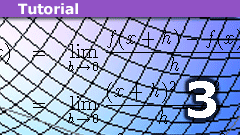
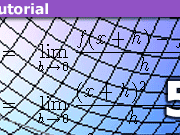

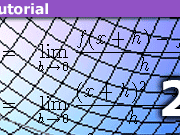
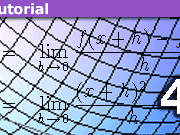
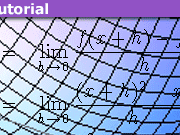
There is also a simple example of a nontrivial tangent bundle. Namely it is ##TS^2##; here ##S^2## is the two dimensional sphere. If ##TS^2=mathbb{R}^2times S^2## then there exists a vector field ##v(x)## such that ##v(x)ne 0## for all ##xin S^2##. But we know that this is not true
How many more parts?two
These are great articles!
How many more parts?